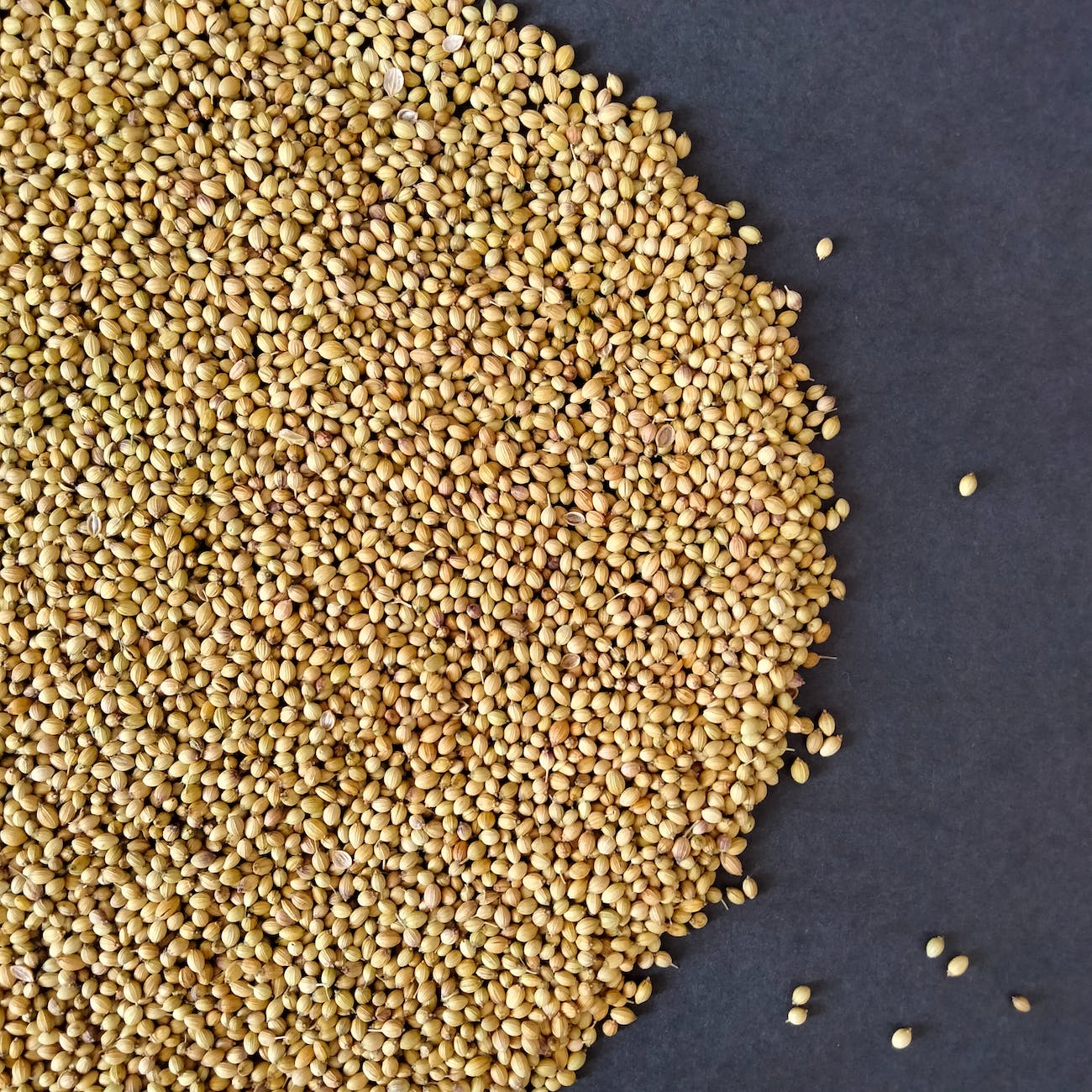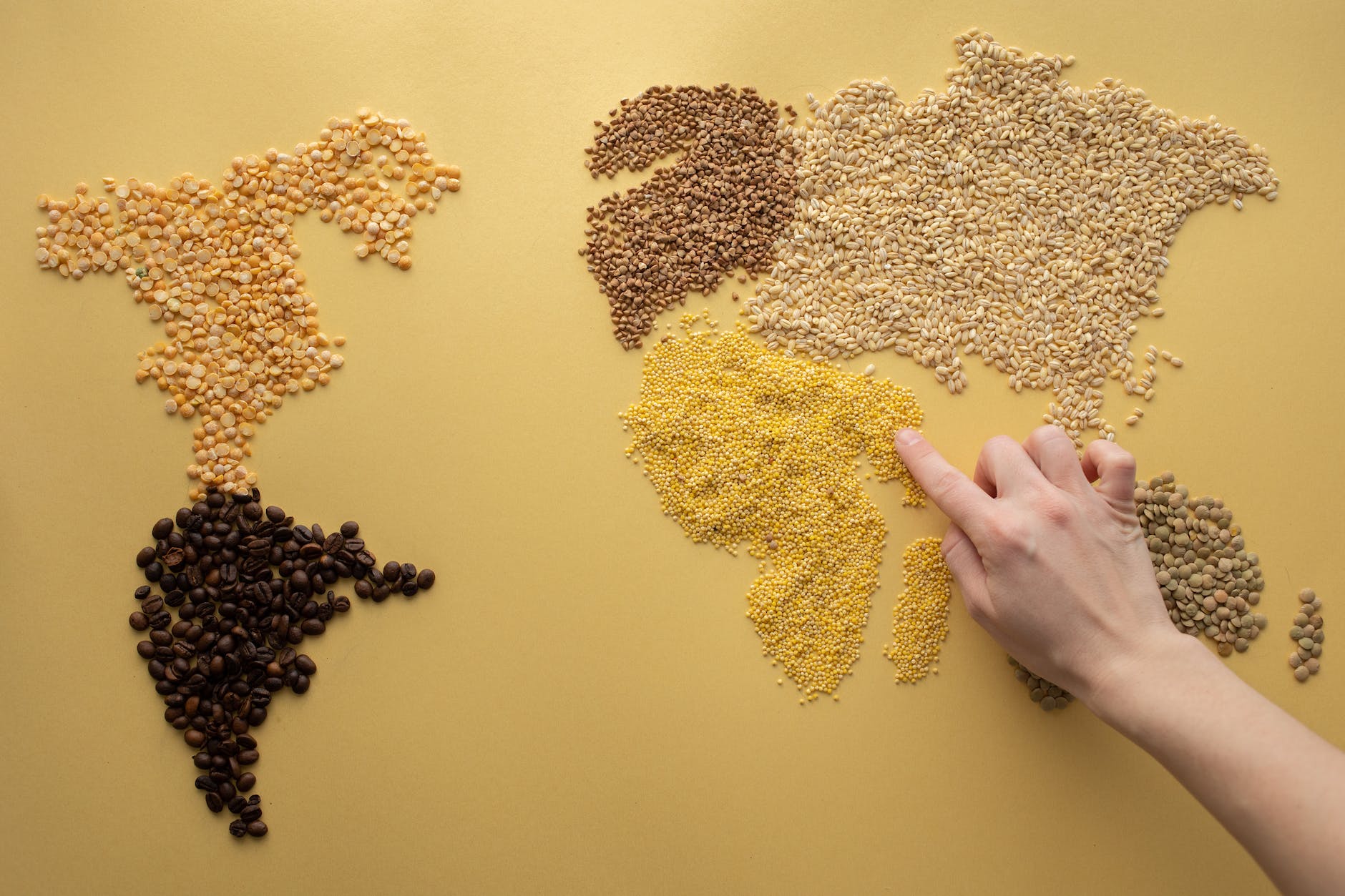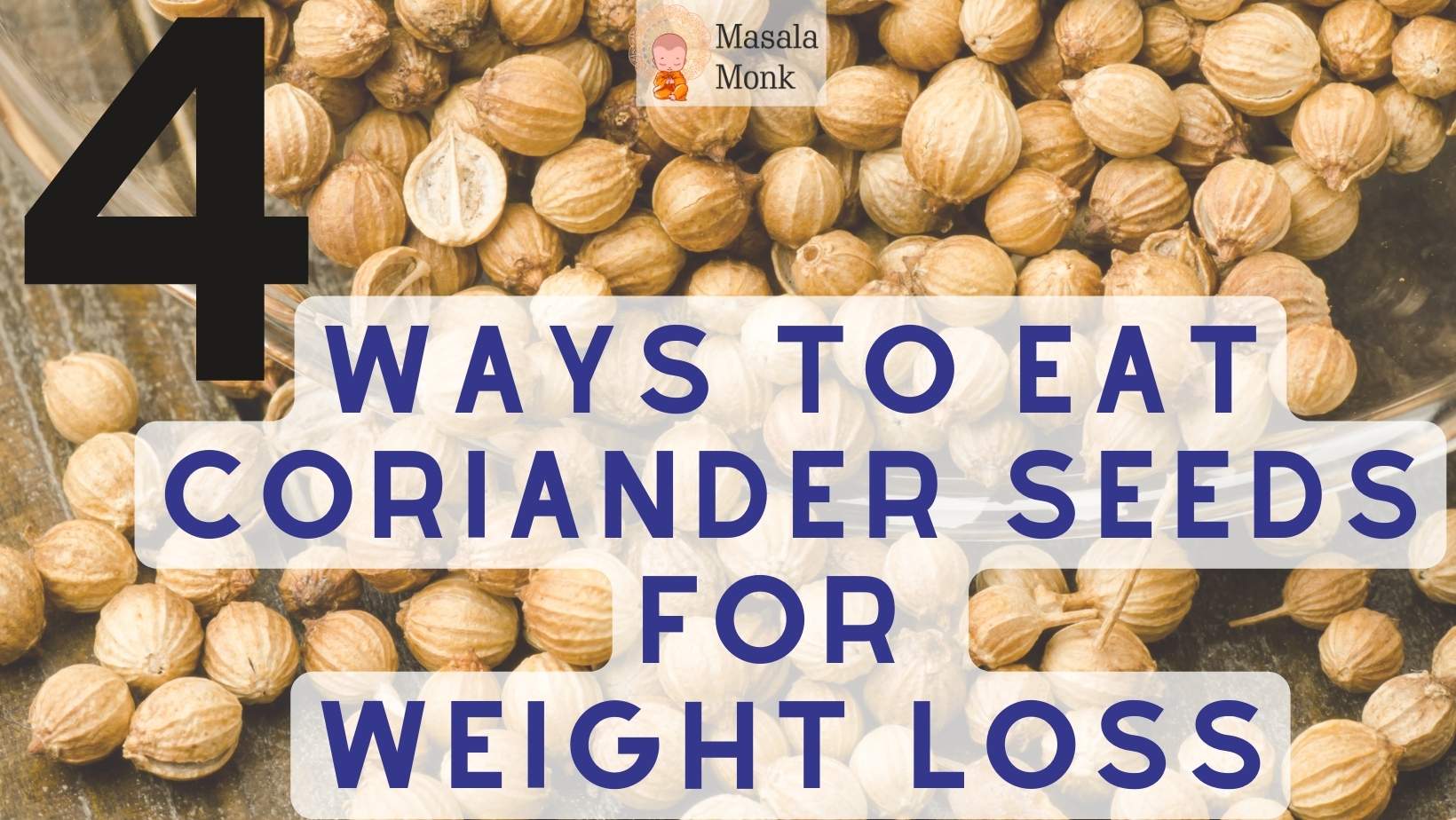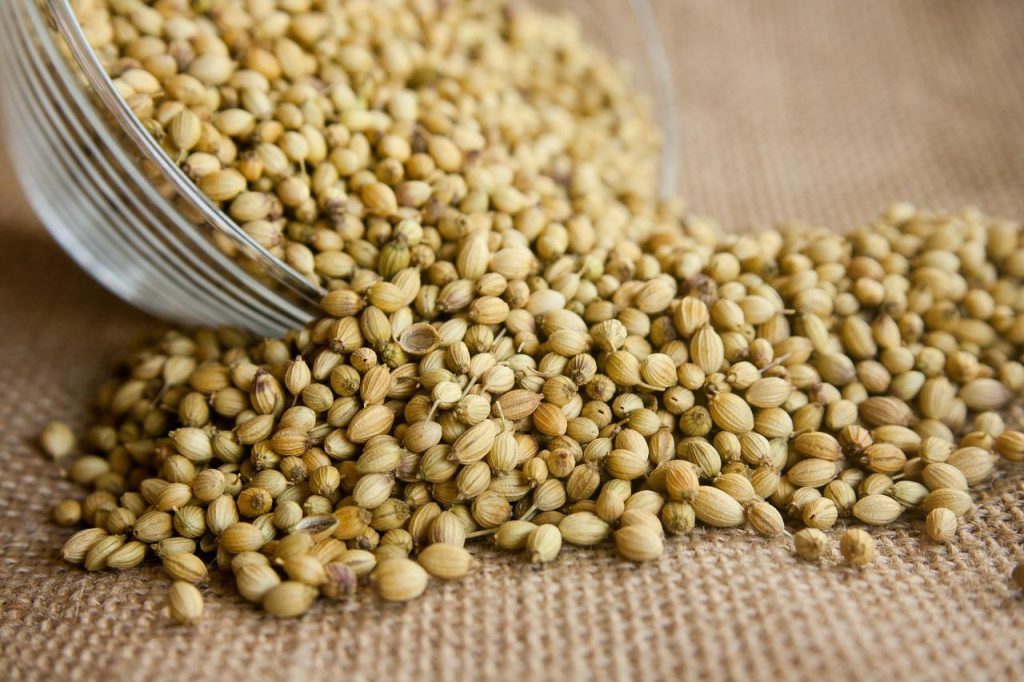
In India, various types of millet are cultivated and widely consumed, each offering unique nutritional benefits and culinary uses. Foxtail Millet, a staple food, is rich in dietary fiber, protein, and iron. Pearl Millet, commonly grown in arid regions, provides a good source of iron, calcium, and magnesium. Finger Millet, popular in Southern India, is a nutritious choice with protein, calcium, and iron. Barnyard Millet, grown in hilly regions, offers protein, dietary fiber, and B vitamins. Little Millet, found in eastern India, is a valuable source of dietary fiber, protein, and minerals. Kodo Millet, grown in the southern regions, is packed with dietary fiber, protein, and minerals. These millets contribute to a diverse and nutritious diet across the country.
Types of Millets in India
- Foxtail Millet (Korra): This is one of the most widely cultivated millets in India, and is a staple food in many parts of the country. It is a rich source of dietary fiber, protein, and iron.
- Pearl Millet (Bajra): This millet is commonly grown in arid regions of India and is used to make rotis, bhakris, and other dishes. It is a good source of iron, calcium, and magnesium.
- Finger Millet (Ragi): This millet is a popular food in Southern India, and is used to make porridges, dosas, and other dishes. It is a good source of protein, calcium, and iron.
- Barnyard Millet (Sanwa): This millet is commonly grown in the hilly regions of India, and is used to make khichdi, porridge, and other dishes. It is a good source of protein, dietary fiber, and B vitamins.
- Little Millet (Kutki): This millet is commonly grown in the eastern parts of India, and is used to make khichdi, upma, and other dishes. It is a good source of dietary fiber, protein, and minerals.
- Kodo Millet (Varagu): This millet is commonly grown in the southern parts of India, and is used to make upma, idlis, and other dishes. It is a good source of dietary fiber, protein, and minerals.
These millets are not only healthy and nutritious but also gluten-free, making them a great choice for people with gluten allergies or sensitivities.
[ez-toc]
Which millet is commonly used to make Breads & Flatbreads in India?
Pearl Millet, or Bajra, is a type of millet that is widely used in India to make flatbreads. It is particularly popular in regions with arid climates, such as Rajasthan and Gujarat, where it serves as a staple food. Pearl Millet is known for its versatility and nutritional benefits, making it an excellent choice for incorporating into traditional Indian cuisine.
To make flatbreads with Pearl Millet, the millet grains are ground into a fine flour, which is then mixed with water and kneaded into a dough. The dough is shaped into small round portions, which are flattened and cooked on a hot griddle or tawa. These flatbreads, commonly referred to as bajra rotis or bajra bhakris, have a unique texture and flavor.
The coarse nature of Pearl Millet flour gives the flatbreads a slightly grainy texture, which many people find appealing. The nutty and earthy flavor of bajra adds a distinct taste to the flatbreads, making them a delightful accompaniment to various Indian curries, lentil dishes, and vegetable preparations.
In addition to its culinary appeal, Pearl Millet offers several nutritional benefits. It is a good source of dietary fiber, providing roughage that aids in digestion and promotes satiety. Bajra is also rich in essential minerals like iron, calcium, and magnesium, which are important for maintaining healthy bones and overall well-being.
The use of Pearl Millet in flatbreads not only adds diversity to the Indian culinary landscape but also enhances the nutritional value of meals. It is particularly valued in regions where the availability of other grains may be limited due to the arid climate. The consumption of Pearl Millet flatbreads provides a wholesome and nourishing option for individuals looking to incorporate nutrient-dense grains into their diets.
[ez-toc]
Foxtail Millet (Korra) and Health Benefits
Foxtail Millet, also known as Korra, is a small-grained cereal that is widely cultivated and consumed in India. It is a rich source of dietary fiber, protein, and iron, making it an important food crop that has been a staple in many parts of India for centuries.
Foxtail Millet is a drought-tolerant crop that can grow in poor soil conditions and requires minimal water. It is grown mainly in the drylands of India and is a hardy crop that can survive in hot and dry climates.
The millet has a nutty flavor and a slightly chewy texture, making it a versatile ingredient that can be used in a variety of dishes. It is commonly used to make porridges, khichdi, and upma, and is also used to make flatbreads, such as rotis and dosas.
Foxtail Millet is a rich source of protein, containing almost 12 grams of protein per 100 grams of millet. This makes it an excellent food for vegetarians and vegans who are looking for plant-based sources of protein.
It is also a rich source of dietary fiber, which is important for maintaining digestive health and preventing constipation. Foxtail Millet contains both soluble and insoluble fiber, which helps to regulate blood sugar levels, lower cholesterol, and promote feelings of fullness and satiety.
In addition to being a good source of protein and dietary fiber, Foxtail Millet is also a rich source of iron. Iron is an essential mineral that is needed for the production of red blood cells, and Foxtail Millet contains almost 3.5 milligrams of iron per 100 grams of millet.
Foxtail Millet is also gluten-free, making it an excellent food choice for people with gluten allergies or sensitivities. It is a low-glycemic index food, which means that it does not cause a rapid increase in blood sugar levels, making it a good food choice for people with diabetes.
In recent years, there has been a renewed interest in the consumption of millet, and Foxtail Millet has gained popularity as a healthy and nutritious food. It is now widely available in supermarkets and health food stores and can be used in a variety of recipes to add flavor and nutrition.
Foxtail Millet is a nutritious and versatile food that has been a staple in many parts of India for centuries. It is a rich source of protein, dietary fiber, and iron, is a gluten-free and low-glycemic index, making it a healthy food choice for people with various dietary requirements.
[ez-toc]
Pearl Millet (Bajra) and Health Benefits
Pearl Millet, also known as Bajra, is a popular grain that has been grown in India for thousands of years. It is an important crop in many parts of the country, especially in the arid and semi-arid regions. This highly nutritious millet is rich in dietary fiber, protein, and essential minerals, and is a staple food in many Indian households.
Pearl Millet has a long history of cultivation in India, dating back to prehistoric times. It was an important crop during the Indus Valley Civilization and has been mentioned in ancient Indian texts such as the Vedas and the Mahabharata. Today, it is grown in many parts of India, especially in the states of Rajasthan, Gujarat, Haryana, Uttar Pradesh, and Maharashtra.
One of the key benefits of Pearl Millet is its nutritional value. It is a rich source of protein, with a protein content that is higher than that of rice or wheat. It is also rich in dietary fiber, which is important for digestive health. Additionally, Pearl Millet contains important minerals such as iron, magnesium, phosphorus, and potassium, which are essential for good health.
Another benefit of Pearl Millet is that it is gluten-free, making it a great choice for people with celiac disease or gluten sensitivity. It is also low in glycemic index, which means that it does not cause a rapid rise in blood sugar levels. This makes it an ideal food for people with diabetes or those who are trying to manage their blood sugar levels.
Pearl Millet can be used in a variety of dishes, including rotis, bhakris, and porridges. It has a slightly nutty flavor and a crunchy texture, which makes it a great addition to salads and other dishes. In addition to being used as a food, Pearl Millet is also used as animal feed and for making alcoholic beverages such as beer and traditional Indian liquor.
In recent years, there has been a growing interest in Pearl Millet as a superfood. It has been shown to have several health benefits, including reducing the risk of heart disease, diabetes, and certain types of cancer. Additionally, Pearl Millet is an environmentally sustainable crop, requiring less water and fertilizer than other grains such as rice and wheat.
Pearl Millet is a highly nutritious and versatile grain that has been an important part of Indian cuisine for thousands of years. It is a great source of protein, fiber, and essential minerals, and is an ideal food for people with celiac disease or gluten sensitivity. With its many health benefits and environmentally sustainable nature, Pearl Millet is an excellent choice for anyone looking to improve their diet and overall health.
[ez-toc]
Finger Millet (Ragi) and Health Benefits
Finger Millet, also known as Ragi, is a popular cereal grain that has been a staple food in many parts of India, especially in the southern regions, for centuries. It is a small, drought-resistant grain that grows well in low-fertility soils, making it an ideal crop for farmers in arid and semi-arid regions. This cereal grain is not only easy to cultivate, but it is also highly nutritious and offers numerous health benefits.
Finger Millet is a rich source of protein, dietary fiber, and essential amino acids. It is also an excellent source of calcium, iron, and other minerals, making it a superfood for people of all ages. It is also gluten-free, which makes it an excellent alternative for people with gluten intolerance or celiac disease.
Finger Millet is versatile and can be used to prepare a wide range of dishes, such as porridge, rotis, dosas, idlis, and baked goods. One of the most popular ways of consuming Ragi is by making a porridge called “Ragi Malt,” which is a common breakfast dish in many households. It is prepared by boiling the Ragi flour with water and adding milk and sugar to taste. This dish is not only delicious but also provides energy and nourishment for the entire day.
Apart from its nutritional value, Finger Millet is also beneficial in the prevention and management of several health conditions. Due to its high fiber content, it helps in regulating blood sugar levels, making it an excellent food choice for people with diabetes. It also aids in weight loss and is recommended as a part of a healthy diet. The high levels of calcium in Ragi also make it an excellent food choice for children and women, especially during pregnancy and lactation.
Finger Millet is not only a nutritious food but also a sustainable crop. It requires minimal water and fertilizers to grow, making it an environmentally friendly crop choice. The crop residue can also be used as animal feed, reducing waste and promoting sustainable farming practices.
Finger Millet (Ragi) is a highly nutritious and versatile cereal grain that has been an essential part of Indian cuisine for centuries. It offers numerous health benefits, making it an excellent food choice for people of all ages, especially those with specific health conditions. Its sustainable farming practices make it an environmentally friendly crop, which should be promoted for its nutritional and ecological value.
[ez-toc]
Barnyard Millet (Sanwa) and Health Benefits
Barnyard Millet, also known as Sanwa or Swank, is a small-seeded cereal grain that belongs to the family Poaceae. It is one of the oldest cultivated crops in the world and is widely grown in India, China, and other parts of Asia. In India, it is commonly cultivated in hilly regions and is a staple food in many parts of the country.
Barnyard Millet is a nutritious grain that is rich in dietary fiber, protein, and minerals. It is a good source of iron, calcium, phosphorus, and magnesium, which are essential for maintaining strong bones and teeth. It is also a rich source of B vitamins, especially niacin, which helps in maintaining healthy skin, nerves, and digestion. The high fiber content in this millet makes it an excellent choice for people with digestive problems, as it helps in regulating bowel movements and promotes digestive health.
One of the most significant benefits of Barnyard Millet is that it is gluten-free, making it an excellent option for people with celiac disease or gluten intolerance. It is also low in glycemic index, which means it is an excellent food for people with diabetes, as it helps in regulating blood sugar levels.
Barnyard Millet is easy to cook and can be used to make a variety of dishes. It can be used to make khichdi, porridge, upma, dosa, and even cakes and cookies. It has a slightly nutty and earthy flavor, which makes it an excellent addition to soups and stews.
In recent years, there has been a renewed interest in Barnyard Millet due to its numerous health benefits. It is also considered an environmentally friendly crop, as it requires less water and fertilizer than other cereal crops. Additionally, it is a drought-resistant crop and can survive in harsh climatic conditions, making it an excellent choice for farmers in dry regions.
Barnyard Millet is a highly nutritious and versatile grain that has been an integral part of Indian cuisine for centuries. Its numerous health benefits, easy availability, and easy cultivation make it an excellent alternative to other cereal grains. With the increasing focus on healthy and sustainable living, it is likely that Barnyard Millet will gain even more popularity in the years to come.
[ez-toc]
Little Millet (Kukti) and Health Benefits
Little Millet, also known as Kutki, is a small-grained cereal crop that has been cultivated in India for thousands of years. This millet is a part of the staple diet in many parts of the country, particularly in the eastern regions. It is one of the oldest grains that were cultivated in India, and it has many health benefits that make it a valuable addition to any diet.
Little Millet is a nutrient-dense grain that is a rich source of dietary fiber, protein, and minerals such as calcium, iron, and magnesium. It also contains essential vitamins such as niacin, thiamine, and riboflavin. The high fiber content of Little Millet makes it an excellent choice for people who are looking to maintain a healthy digestive system, as it helps to prevent constipation and other digestive issues. Additionally, the protein content of Little Millet makes it a good source of energy and helps to build and repair tissues in the body.
One of the significant benefits of Little Millet is its low glycemic index. The glycemic index is a measure of how quickly food raises blood sugar levels in the body. Foods with a high glycemic index can cause a rapid spike in blood sugar levels, which can lead to a host of health problems, including diabetes, obesity, and heart disease. Little Millet has a low glycemic index, which means that it releases glucose into the bloodstream slowly, providing sustained energy and helping to regulate blood sugar levels.
Another advantage of Little Millet is that it is gluten-free, which makes it an excellent choice for people who have celiac disease or are sensitive to gluten. Gluten is a protein that is found in wheat, barley, and rye, and it can cause severe digestive issues in people who are intolerant to it. Little Millet is a great alternative to wheat and other gluten-containing grains, as it is easy to digest and does not cause any digestive issues.
Little Millet is a versatile grain that can be used in a variety of dishes. It can be cooked like rice or used to make porridge, upma, khichdi, and other dishes. It has a nutty flavor and a slightly chewy texture, which makes it a great addition to salads and other dishes. It can also be used to make flour, which can be used to make bread, pancakes, and other baked goods.
Little Millet, also known as Kutki, is a nutritious and versatile grain that has many health benefits. It is a rich source of dietary fiber, protein, and minerals and has a low glycemic index, making it an excellent choice for people who are looking to maintain a healthy diet. Its gluten-free nature makes it a great alternative to wheat and other gluten-containing grains, and it can be used in a variety of dishes. Little Millet is an essential part of India’s culinary heritage, and its many health benefits make it a valuable addition to any diet.
[ez-toc]
Kodo Millet (Varagu) and Health Benefits
Kodo Millet, also known as Varagu in Tamil, is a type of millet that is native to India. It is a small, grain-like cereal that has been a staple food in many parts of the country for centuries. Kodo Millet is an extremely nutritious and versatile food that can be used in a variety of dishes.
Kodo Millet is rich in dietary fiber, protein, and minerals, such as calcium, magnesium, and iron. It is also low in fat and has a low glycemic index, which makes it a great food for people who are trying to manage their weight or blood sugar levels. In addition, Kodo Millet is gluten-free, making it a great alternative for people who are allergic or sensitive to gluten.
One of the most popular ways to prepare Kodo Millet is as a substitute for rice. Kodo Millet can be boiled or steamed, just like rice, and used as a base for a variety of dishes. It can also be used to make porridge, upma, idlis, and other traditional Indian dishes.
One of the benefits of using Kodo Millet as a substitute for rice is that it has a nuttier, more complex flavor than rice. This makes it a great ingredient for salads and other dishes where the flavor of the grain is important.
Another benefit of Kodo Millet is that it is extremely easy to cook. It cooks much faster than other grains, such as rice or quinoa, and requires minimal preparation. This makes it a great choice for busy people who want to eat healthily but don’t have a lot of time to cook.
In addition to its nutritional benefits, Kodo Millet is also environmentally friendly. It is a drought-resistant crop that requires very little water to grow. This makes it a great alternative to other crops, such as rice, which require large amounts of water to grow.
Overall, Kodo Millet is an incredibly nutritious and versatile food that can be used in a variety of dishes. It is a great alternative to rice and other grains and is a great choice for people who are trying to eat healthily, manage their weight or blood sugar levels, or are allergic or sensitive to gluten. It is also an environmentally friendly crop that can help to reduce the amount of water needed to grow crops.
[ez-toc]















